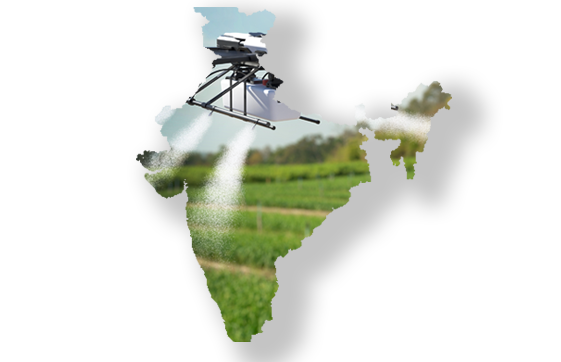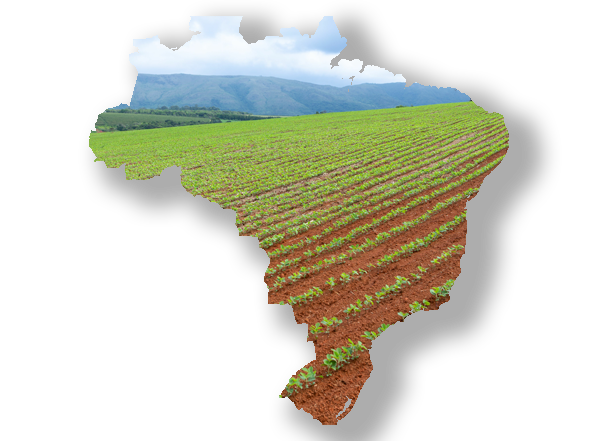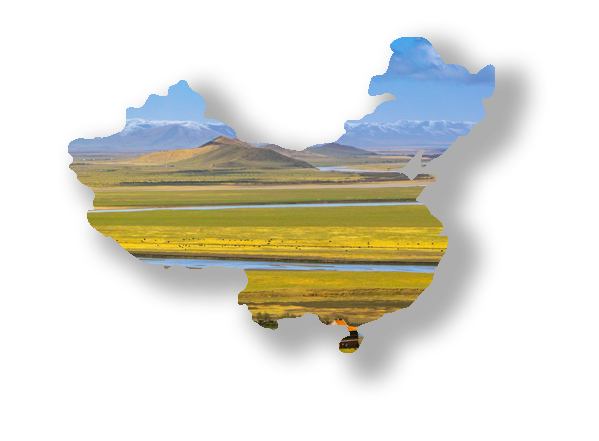Climate and Ag Tech Take Center Stage in Government Ag Investments

From West to East, sustainable efforts move forward with focus on scaling up climate-smart practices and technologies.
Scroll Down to Read
By Jackie Pucci
Contributor
UNITED STATES: Emphasis on Climate-Smart, Supply Chain

The United States Department of Agriculture’s (USDA) top goal for 2023, as described in its performance plan, is to “combat climate change to support America’s working lands, natural resources, and communities.”
On 14 September 2022, Secretary of Agriculture Tom Vilsack announced USDA would be investing up to $2.8 billion in 70 selected projects under the first pool of the Partnerships for Climate-Smart Commodities funding opportunity. On 12 December 2022, he announced $325 million will be invested in an additional 71 projects under the second funding pool.
“Expanding opportunities for small and underserved producers is a key goal of Partnerships for Climate-Smart Commodities. Small and underserved producers are facing the impacts of climate change head on, with limited resources, and have the most to gain from leveraging the growing market demand for agricultural goods produced in a sustainable, climate-smart way. Our goal is to expand markets for climate-smart commodities and ensure that small and underserved producers reap the benefits of these market opportunities,” said Vilsack.
At Commodity Classic 2023 in Orlando, Dr. Jennifer Wells, Senior Agronomist with the Land O’Lakes-owned Truterra, which is the lead partner on a $90-million USDA grant for the project, Climate SMART (Scaling Mechanisms for Agriculture’s Regenerative Transformation) shared that this project, which will reach across 28 states, aims to catalyze a self-sustaining, market-based network to broaden farmer access, scale adoption of climate-smart practices, and sustainably produce grain and dairy commodities with verified and quantified climate benefits.
According to the company, ag retailers will play a central role in the pilot project, working with grant partners to incent farmers to adopt regenerative agriculture practices, including helping match farmers with incentives, agronomic advice, peer-to-peer networks, data entry support and more to support improved soil health systems. Grant partners will deploy existing digital infrastructure, including the Truterra sustainability tool, to aid in measuring impact and supporting validation and quantification processes.
When regenerative agriculture and carbon markets began, Wells likened it to Bitcoin, or Monopoly money — in other words, it was not well understood.
“There is a tremendous amount of difference compared to even a couple of years ago. Growers now have been approached by several different carbon companies, so they are becoming more and more educated, which is great. They’re knowing the right questions to ask, and they know the issues they want to adjust,” Wells said. “Especially with this Climate-Smart USDA grant, I think that’s given a lot of fuel to the fire, too. It’s here to stay.”
Last March, USDA also announced $250 million in new grants to innovative, American-made fertilizer to give U.S. farmers more choices in the marketplace and address rising costs.
“Recent supply chain disruptions from the global pandemic to Putin’s unprovoked war against Ukraine have shown just how important it is to invest in this crucial link in the agricultural supply chain here at home,” Vilsack said.
To respond to disruptions in the food supply chain caused by the COVID-19 pandemic, USDA’s 2024 budget builds on $400 million in investments through the American Rescue Plan by investing more than $240 million in supporting new supply chains and markets that support small- and mid-sized farmers.
Another key goal stated by the agency for ’23 is to “foster an equitable and competitive marketplace for all agricultural producers.” As part of this, USDA will continue to provide tools (e.g., beginning farmer loans and crop insurance) to domestic producers “so that they are well-positioned to secure a share of the growing global market for agricultural products.”
INDIA: Agri-Tech Boom

Under the country’s Make in India policy, proposals to ease registration of products within the Technical Indigenous Manufacturing category are poised to help speed the process, as well as reduce costs, Samir Dave, Director at Aimco Pesticides, told AgriBusiness Global.
“Mandatory registration of Technical Grade Pesticides of Formulation Import will also be beneficial to Indian industries and will increase available active ingredients to Indian farmers at reasonable costs,” Dave said. He noted that the introduction of the Production Linked Incentive (PLI) scheme in the chemical sector can propel the growth of the agchem sector in India and reduce dependence on imports.
The government’s focus on promoting domestic manufacturing and sustainable agriculture along with promotional schemes is expected to continue to drive growth in the agriculture sector moving forward, Dave said.
However, while relaxation of registration guidelines and probable introduction of incentive schemes like PLI can be considered supportive, at the same time, “extreme environmental norms — stricter than even Western countries — may result in penalizing the industries,” Dave added.
Indian agriculture has traditionally been impacted by a lack of credible and timely data such as area under production, yield, crop and soil health, and commodity prices, which, in turn, have caused demand-supply imbalance, volatility in the market prices of commodities, and subpar use of natural resources, according to Hermendra Mathur, Chairman of the FICCI Task Force on Agri Start-ups, in a Pricewaterhouse Coopers report.
However, Mathur noted, “the transformation of Indian agriculture through digitization is underway, improving farmers’ access to markets, inputs, data, advisory, credit and insurance.”
India ranks third in terms of agritech funding and number of agritech startups, having received around $1 billion in funding from 2017 to 2020, according to the India Brand Equity Foundation (IBEF), a trust established by the Indian government. By 2025, Indian agritech companies are likely to witness investments worth $30 to $35 billion, IBEF said.
According to PricewaterhouseCoopers, the government is encouraging the adoption of smart farming practices by ramping up funding for digital agricultural initiatives utilizing artificial intelligence, machine learning, the Internet of Things (IoT), and blockchain to achieve rapid development in India.
Prime Minister Narendra Modi launched 100 Kisan drones in 2022 in various cities and towns across India to spray pesticides on farmland, saying that “India was marking a new chapter in the direction of modern farming system of the 21st century.” Drones will also be promoted by the government for crop assessment, digitization of land records, and spraying of pesticides and nutrients for which provisions have also been made in the budget.
“Drone technology will be available on a scale only when we promote agri-startups. In the last three to four years, more than 700 agri-startups have been created in the country,” Modi commented in a webinar about the country’s budget for agriculture.
To promote the use of Kisan drones, the government is also providing a Rs 5 lakhs ($6,098 USD) subsidy to small, marginal, and women farmers of northeastern states to buy drones, and grants up to Rs 10 lakhs ($12,196 USD) to agricultural institutes for purchase of drones. In February, Union Minister of Agriculture and Farmers Welfare, Shri Narendra Singh Tomar said funds amounting to Rs 126.99 crores ($15,487,941 USD) have been released toward Kisan drone promotion.
BRAZIL: Safra Plan Expands in ‘23

Javier Chavarro, Independent Consultant, said, “the Gross Value of Agricultural Production (VBP) in 2023 in Brazil is estimated at R$1.25 billion (US$246,526,250), up 5% from last year, the largest value since tracking began 34 years ago.”
The VBP is calculated based on information from the February harvests, released by the National Supply Company (Conab) and the Brazilian Institute of Geography and Statistics (IBGE). The value of crops is forecast at R$887.7 billion (US$175,073,081 — an increase of 8.9%) and livestock, R$361.9 billion (US$71,374,279 — a decrease of 3.4%).
“To support Brazilian agricultural production, the Safra Plan allocates resources every year for financing and investment in this sector,” Chavarro said. “There are several modernization, innovation, and sustainability programs, always prioritizing small and medium rural producers.
“In the 2022/2023 harvest, total availability of rural credit will be R$340.9 billion (approximately US$64.7 billion). Of this value, 72.2%, or R$246.3 billion (about US$46.7 billion), will be allocated to costs and marketing, 39% more than last year. The remaining .8%, or R$94.6 billion (about US$18 billion), will be allocated for investment, an increase of 29%,” he added.
Chavarro said Safra Plan’s value reflects an increase of 36% from the previous plan and encompasses the following milestones:
- Sustainability
- Small and medium producers
- Aquaculture and fishing
- Innovation focused on connectivity systems in the field, software and licenses, and monitoring and automation of productive activities
- The Warehouse Construction and Expansion Program (PCA), which finances necessary investments for the expansion and construction of new warehouses. This PCA will have R$5.13 billion available in the next Safra Plan
- Availability by Program in Banks
“There are two very interesting points within the ‘Plano Safra’ program: Sustainability and Innovation,” said Chavarro.
Under the Sustainability program, promoting sustainable agricultural production techniques continues to be one of the priorities of the Safra Plan. It seeks to strengthen environmental sustainability in Brazilian agribusinesses through The ABC2 Plan (low carbon emission agriculture), which has a budget of R$6.19 billion (approximately US$1.2 billion) that includes seven programs:
1: Recovery of Degraded Pastures
2: Crop-Livestock-Forest Integration (iLPF) and Agroforestry Systems (SAF)
3: Direct Tillage System (SPD)
4: Biological Nitrogen Fixation (BNF)
5: Planted Forests
6: Treatment of animal waste
7: Adaptation to Climate Change.
“Within the Innovation program, through schemes such as Inovagro, the Safra Plan makes resources available to encourage technological innovation and necessary investments for the adoption of good agricultural and property management practices,” said Chavarro. “In the next harvest, Inovagro will have R$3.51 billion in resources (about US$665 million), with annual interest of 10.5%.”
CHINA: Balancing Sustainability with Low-Cost Production

Since the beginning of China’s strengthening of environmental protection in 2017, many Chinese pesticide companies have built new production facilities in the upper reaches of the Yellow River in the northwest, which has attracted some small and medium-sized producers that have less social responsibility, according to David Li, Marketing Director for SPM Biosciences.
The Yellow River Protection Law — which took effect on 1 April 2023 — will have an impact on those unregulated producers. However, individual irregular producers will have a ripple effect on the whole region. Once individual problems occur, the government will generally conduct a comprehensive inspection of the entire region’s production. This will have a negative impact on production operations in Northwest China, Li said.
Accordingly, the existing production capacity in China’s eastern coastal region will continue to be stable due to the environmental infrastructure upgrades that have been completed in the eastern coastal region. In the future, China will prohibit the construction and expansion of new chemical parks and chemical projects within the control area of the shoreline of the main and tributary rivers of the Yellow River.
Under China’s 14th Five-Year Plan, a set of “green” policies enacted through 2025 have presented a critical challenge for the world’s largest agrochemical industry: How to balance low-cost production and environmental regulations.
President Xi Jinping proposed during the 75th United Nations General Assembly that the country will aim to reach peak carbon by 2030 and then decline, with a goal to reach carbon neutrality by 2060 — i.e., “the 30 60 target.” As the world’s largest emitter, China accounts for one-third of the total global carbon emission.
As such, energy consumption is a key focus area and is captured under China’s “dual control” policy, under which provinces are given targets for total energy consumption and energy intensity (carbon emissions per unit of GDP).
In addition, China launched its national carbon market in 2021 on the Shanghai Environment and Energy Exchange — however, according to Bloomberg, it has thus far failed to force the country’s power companies to slash emissions.
“Under the backdrop of carbon neutrality, China’s pesticide industry will continue to develop along the direction of industrial structure optimization, technological advancement, energy savings, and emission reductions,” Dr. Yousheng Duan, Assistant Secretary-General of CCPIA said.
A competitive “A-cluster” of China’s leading agrochemical companies will emerge in the next 10 years by way of consolidation, he explained. “Low energy consumption, low cost, high automation, and high efficiency will be the general direction of industrial development.”
As Li wrote in late 2022, “The advantages of integrated manufacturing clusters will far exceed those of chemical parks. With leading enterprises as the driving force, integrated manufacturing clusters combine upstream raw material resources with downstream fine chemical production to form a complete industrial value chain.” He added: “Like the European Union and United States, China is investing in more sustainable efforts, which will bring huge benefits to the world’s 1.4 billion people in the East.”
EUROPEAN UNION: More Regulators Needed

Agriculture and rural areas are central to the European Green Deal, and the common agricultural policy (CAP) from 2023-27 will be a key tool in reaching the ambitions of the Farm to Fork and biodiversity strategies, according to the European Commission.
The CAP, with a budget of €387 billion (US$425 billion) for the 2021-27 period, outlines 10 key objectives:
-
Ensure a fair income for farmers,
-
Increase competitiveness,
-
Improve the position of farmers in the food chain,
-
Climate change action,
-
Environmental care,
-
Preserve landscapes and biodiversity,
-
Support generational renewal,
-
Vibrant rural areas,
-
Protect food and health quality, and
-
Foster knowledge and innovation.
The EU’s Farm to Fork Strategyalso sets out two objectives in terms of pesticide reduction: A 50% reduction by 2030 in the use and risk of chemical pesticides and the use of more hazardous pesticides.
According to the European Commission, the new CAP encompasses several instruments for farmers in their efforts to reduce the use of pesticides, such as a minimum €48.5 billion (US$52.7 billion) for environmental and climate practices, including for reduction of pesticides and organic farming. The CAP’s second Pillar can also support investments in precision farming, which also contribute to pesticide reduction.
Stephen Pearce, Co-founder and Managing Partner, Chemovateq Swiss AG investments, and Co-founder and Chairman of AgBioScout, calls attention to the fact that while EU has stepped up revocations of chemistry and commitments to reducing the amount of chemistry that is on the land, it still takes far longer than other regions to register necessary alternatives to these products, namely biologicals. Compared to the U.S., Brazil, China, and India, where it takes in the range of two to three years to register a biological, Europe takes seven years.
“We’re behind the curve. There’s no doubt in my view that we’ve got to sort out the regulatory timelines. If there’s money that needs to go into the sector, it needs to be in regulatory people,” Pearce said. “There are too few of them having to climb an absolute mountain in terms of dossiers that could be made available to the value chain.”
He adds that the regulatory situation also hinders private investment. “If something is earlier stage (in development) and doesn’t have registration yet, that’s a hard hurdle for an investor to get their head around.”
Further, climate change necessitates a new set of products to address different disease profiles and pests that will potentially arise as, for example, southern Europe becomes hotter and drier and northern Europe becomes hotter and wetter. •
Photos to bottom:
Es sarawuth – Stock.Adobe.com
Waranyu– Stock.Adobe.com
Alinamd – Stock.adobe.com
Es sarawuth – stock.adobe.com
Imago/Wirestock Creators – stock.adobe.com
Zimu – stock.adobe.com
Sen – stock.adobe.com
Photo of Jennifer Wells courtesy of Jackie Pucci
Photo of Samir Dave courtesy of Aimco
